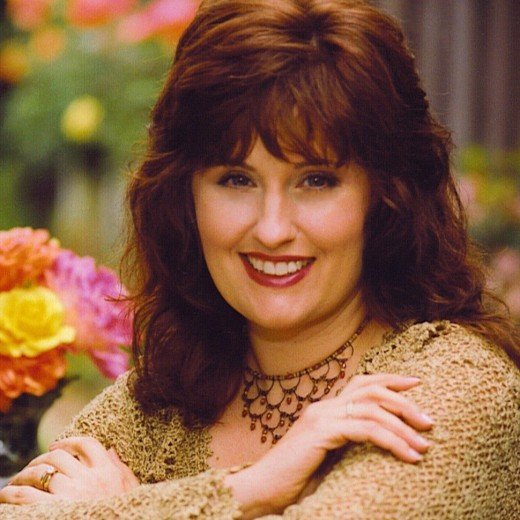At, Through, or To: Point of View & Narrative Distance in Fiction by Fallon Clark
 Let’s welcome back Fallon Clark as she shares with us “At, Through, or To: Point of View & Narrative Distance in Fiction” Enjoy!
Let’s welcome back Fallon Clark as she shares with us “At, Through, or To: Point of View & Narrative Distance in Fiction” Enjoy!
***
Perhaps it was a bit of dialogue you tuned into on a random Thursday evening.
Perhaps you saw your character in a peculiar setting or found them under unusual circumstances.
Maybe you saw an apocalyptic event and a regular Joe navigating and besting the aftermath.
Many stories begin with a character’s voice and an idea, but regardless of the story’s genesis, you started writing and picked a pronoun for your viewpoint character telling–or living–the story.
Now that you’re revising, it’s time to analyze that chosen POV to ensure it’s delivering the message you want your reader to receive in the way you want them to receive it.
There are lots of how-to articles online describing what the first, second, and third person are. I won’t rehash those basics.
Instead, this article is about the narrative distance allowed through your chosen POV–how close to or far away from your viewpoint character you want the reader to be–and offers some creative ways to use POV to best fit your needs.
Let’s dig in.
Looking At Your Character
When you write or read back through your story, you see it happening cinematically.
There’s your character picking their way through the literary landscape on their transformative journey from here to there. Look at what they do, how they do it, who they move, and the challenges they face!
Getting readers to look at your character means distancing the reader from the character so the reader doesn’t step into your character’s shoes. Not completely, anyway, if at all.
Both the objective POV and the omniscient POV offer ways to get readers looking at your characters, and you’ll use these POVs for different purposes.
Within the objective POV, the narrator blends into the background to become a fly on the proverbial wall who can overhear and observe but never interact with the characters or the scene in front of them.
Notice how you don’t get into anyone’s head or heart in this excerpt from Earnest Hemingway’s short story, Hills Like White Elephants:
“Doesn’t it mean anything to you? We could get along.”
“Of course it does. But I don’t want anybody but you. I don’t want anyone else. And I know it’s perfectly simple.”
“Yes, you know it’s perfectly simple.”
“It’s all right for you to say that, but I do know it.”
“Would you do something for me now?”
“I’d do anything for you.”
“Would you please please please please please please please stop talking?”
Here, the tension comes from the dialogue alone, and, indeed, the dialogue must bear the weight of the emotionally heavy scene.
The objective POV works particularly well when big emotions may cause a character to pull back, especially when you need to give readers the space to figure out how they feel about the topic or theme being uncovered.
But the objective POV can be limiting and keeps readers at an arm’s length, which can also tax readers over the length of a novel.
Balancing the objective with a more expansive POV, like the omniscient, can help keep the flow of information moving even if your characters aren’t, as in this excerpt from Alan Dean Foster’s Dinotopia Lost:
Although they did not know it, there was not one of the great meat-eaters lurking in the vicinity of their camp but half a dozen, and the crew of the Condor encountered them not in their nightmares but on the following morning, which was bright and full of sunshine.
The omniscient POV pulls in a narrative voice that delivers information to the reader that the characters can’t know, which increases dramatic irony.
And the best part is that you get to decide whether your omniscient narrator tells some truth, the whole truth, or whether they’re lying through their fictional teeth while readers look at your characters.
Looking Through Your Character
Where the objective and omniscient POVs have readers looking at your characters, both the first- and third-person POVs can get readers looking through your characters to experience the story, rather than just reading about it.
When you want readers looking through the eyes of your viewpoint character — wearing their clothes and shoes, eating their meals, petting their cats — getting readers up close and personal with your character is key.
This excerpt from Sara Gruen’s Water For Elephants allows readers to get inside Jacob’s (the viewpoint “I”) head as he processes the realities of circus life and falls for a woman he’s not supposed to love:
My jaw moves, but it’s several seconds before anything comes out. “Marlena, what are you saying?”
When I look up, her face is cherry red. She’s clasping and unclasping her hands, staring hard at her lap.
“Marlena,” I say, rising and taking a step forward.
“I think you should go now,” she says.
I stare at her for a few seconds.
“Please,” she says, without looking up.
And so I leave, although every bone in my body screams against it.
In this centrally narrated first-person POV, readers are pulled into the story because they exist–for the length of the novel–in Jacob’s head.
Readers hear his thoughts and how he processes his emotions. They feel how he struggles to stay composed or act appropriately. They see the circus and the world through Jacob’s eyes.
And the third-person POV, not be outdone by its “I” counterpart, also gets readers close to your characters when limited to a single character’s perspective, as in this excerpt from The Midnight Library by Matt Haig:
That, she supposed, was the basis of depression as well as the difference between fear and despair. Fear was when you wandered into a cellar and worried that the door would close shut. Despair was when the door closed and locked behind you.
But with every life she saw that metaphorical door widen a little further as she grew better at using her imagination.
In this example, there’s almost a stream-of-consciousness style in the way Nora (the viewpoint “she”) processes her feelings along her soul-searching journey to a fulfilled life, a style that is not dissimilar from the first-person narrative style.
Looking To Your Character
Now, you may want readers looking to your character, rather than at or through them. And for this narrative style, the second-person POV may be the perspective you need.
While many hear “second person” and immediately think of the choose-your-own-adventure books of our childhoods, many others hear in it a world of possibility of inviting readers to take part in the story or in allowing a character to explore other parts of themselves within the story.
If your story is one rife with trauma or shock, the second-person POV may allow your character to dissociate, to see themselves as other, to look to other parts of themselves, as in this excerpt from Tamsyn Muir’s Harrow the Ninth:
It was very cold. A fine shimmer of frost now coated your cheeks, your hair, your eyelashes. In that smothering dark, your breath emerged as wisps of wet grey smoke. Sometimes you screamed a little, which no longer embarrassed you. You understood your body’s reaction to the proximity. Screaming was the least of what might happen.
Here, the viewpoint character detaches, distances herself from the trauma she experienced, which ends up shining a bright light on that trauma for readers.
But second-person POV can immerse as much as it can detach, pulling the reader into the literary fold and giving them a role to play. Erin Morgenstern’s The Night Circus uses short, recurring passages written in the second person to create a dreamy quality, something like magic, for the reader to experience:
The tunnel twists and turns, the tiny lights providing the only illumination. You have no way of discerning how far you have gone or which direction you are moving in.
Finally you reach another curtain. Fabric that feels as soft as velvet beneath your hands parts easily when you touch it.
The light on the other side is blinding.
And readers of second person will have to look to themselves as they move along the story to find its meaning.
Similarly to the objective POV, the second-person POV can be taxing over the length of a novel because it constantly asks readers to do something. So, balancing the second person with a more expansive POV, like the omniscient or a limited third person, can help bring balance to a novel.
Choosing Your POV
Consider how close you want your readers to be to your viewpoint character when analyzing your POV and choosing whether to change it, whether all or in part.
- Want readers to hear your character’s thoughts or emotions? First- or third-person POV is likely the best choice.
- Want readers to participate in the story, do something? Try the second person.
- Prefer a more cinematic experience, inviting the reader to become a voyeur in book format? The objective may be the right fit for you.
Many novels leverage several POVs to bring balance to the work and get readers everything they need to enjoy reading. So, if a single narrative style feels too limiting, try a few things to find the style that works best for your novel and unleash your creativity.
***
ABOUT THE AUTHOR
 Fallon Clark is an independent story development coach and editor serving fiction and creative non-fiction authors. Her fiction has been published in Flash Fiction Magazine. When not editing or writing, you will find her gardening, reading tarot, or staring into the universe’s star-crusted abyss to wonder, “What if?”
Fallon Clark is an independent story development coach and editor serving fiction and creative non-fiction authors. Her fiction has been published in Flash Fiction Magazine. When not editing or writing, you will find her gardening, reading tarot, or staring into the universe’s star-crusted abyss to wonder, “What if?”
CONNECT WITH FALLON:
Web: https://www.fallonedits.com
LinkedIn: https://www.linkedin.com/in/fallonedits
Quora: https://www.quora.com/profile/FallonEdits
Minds: https://www.minds.com/itsmefal






